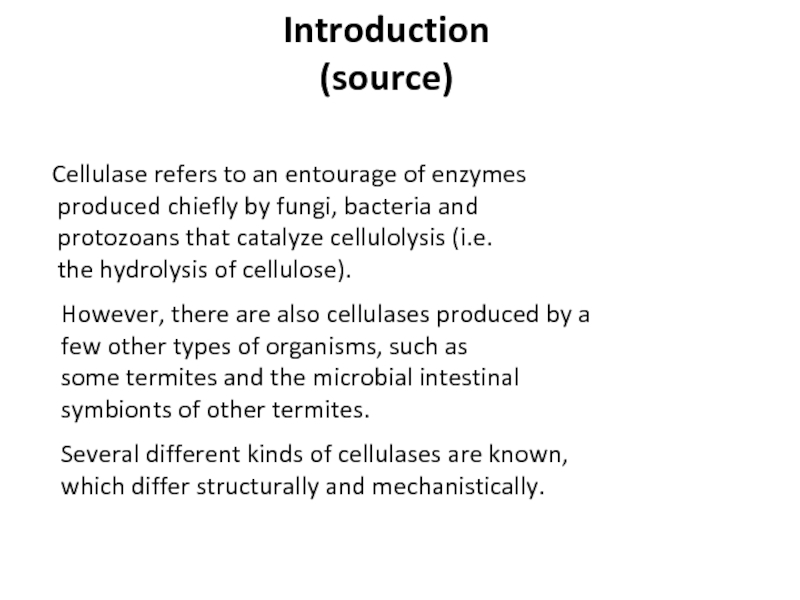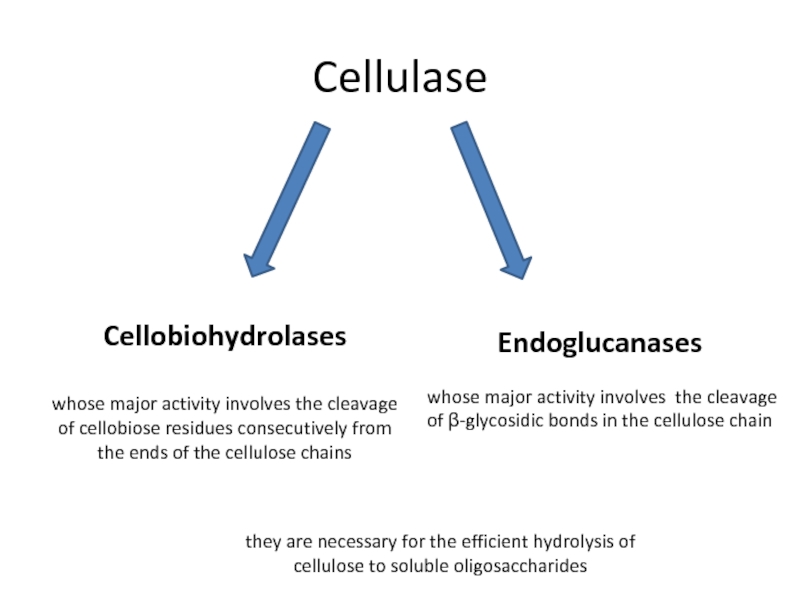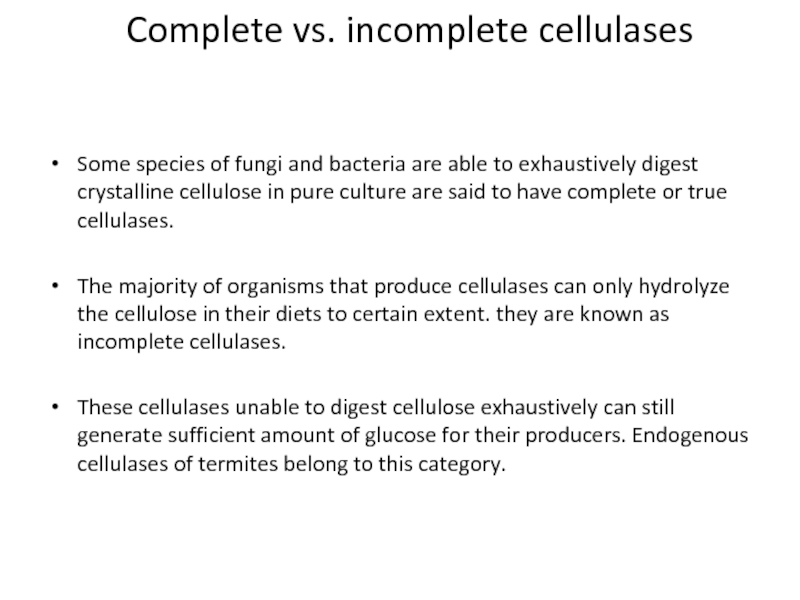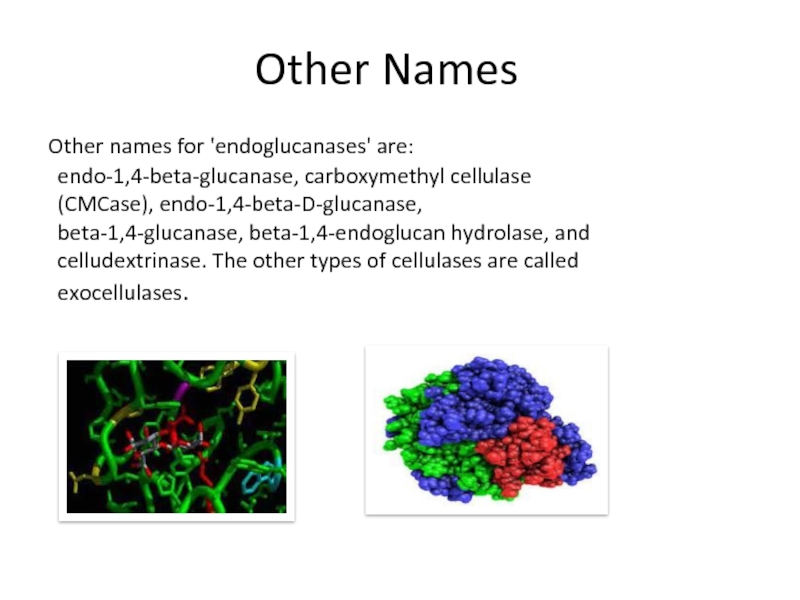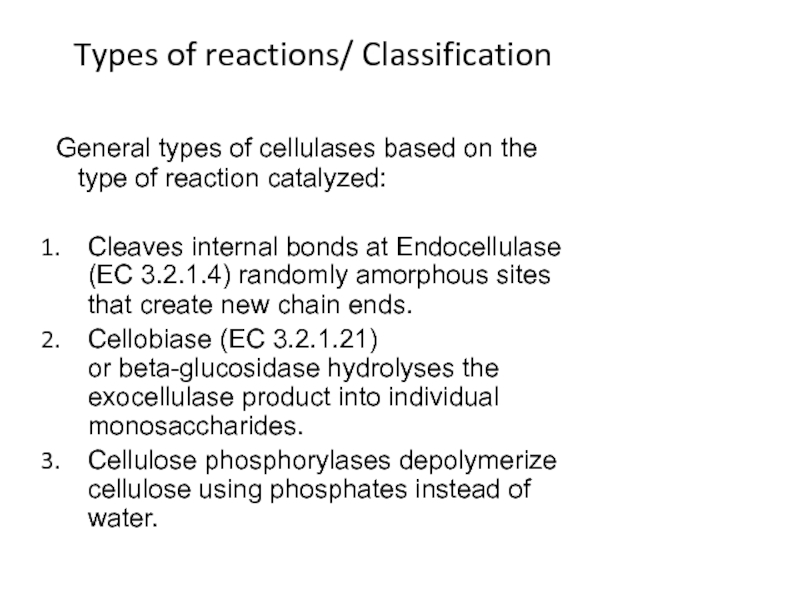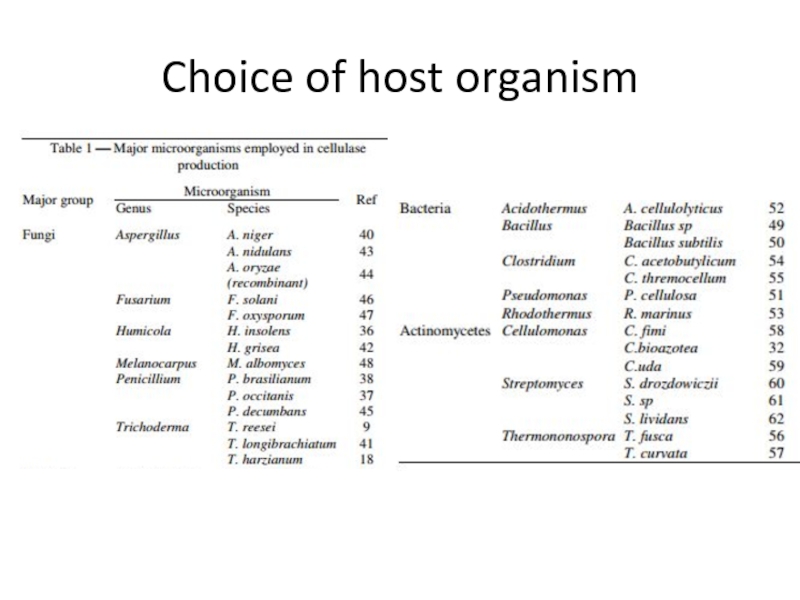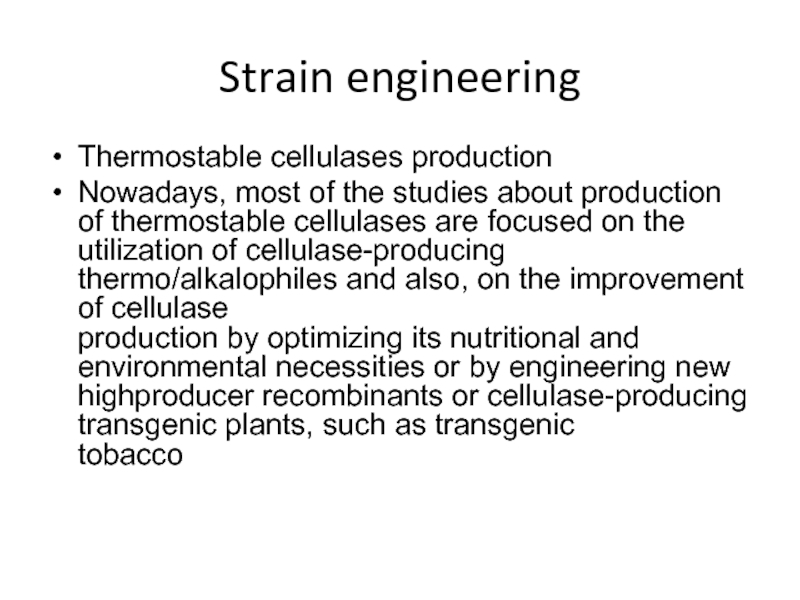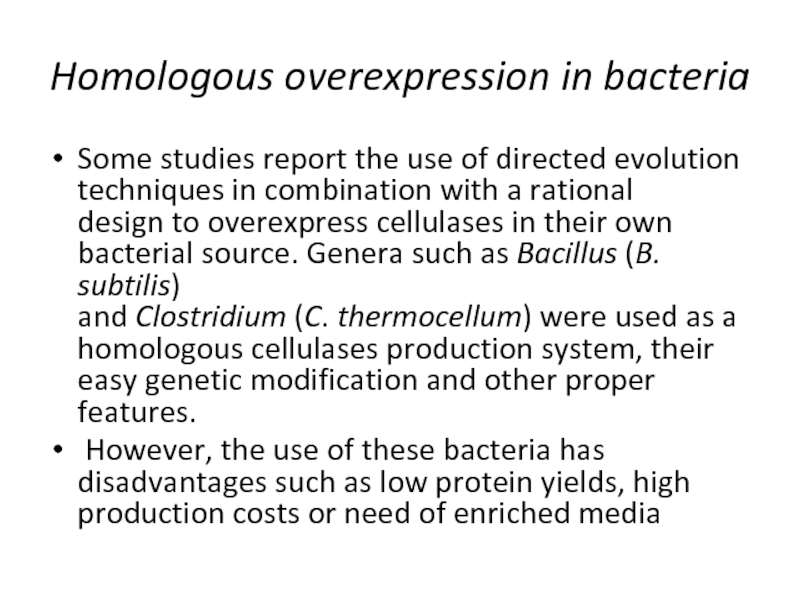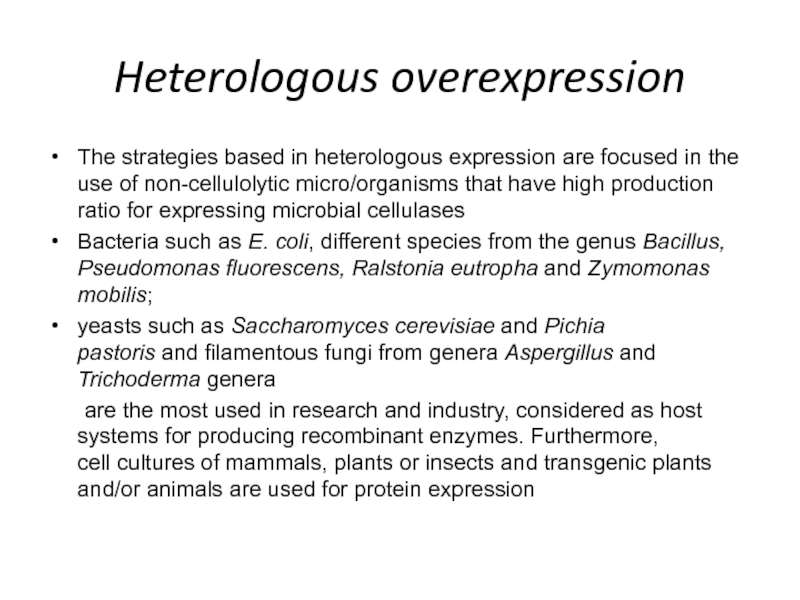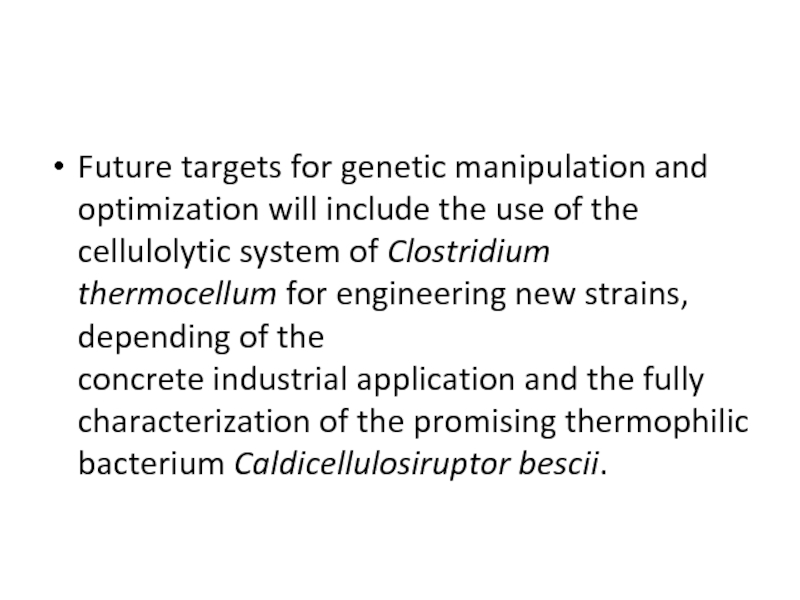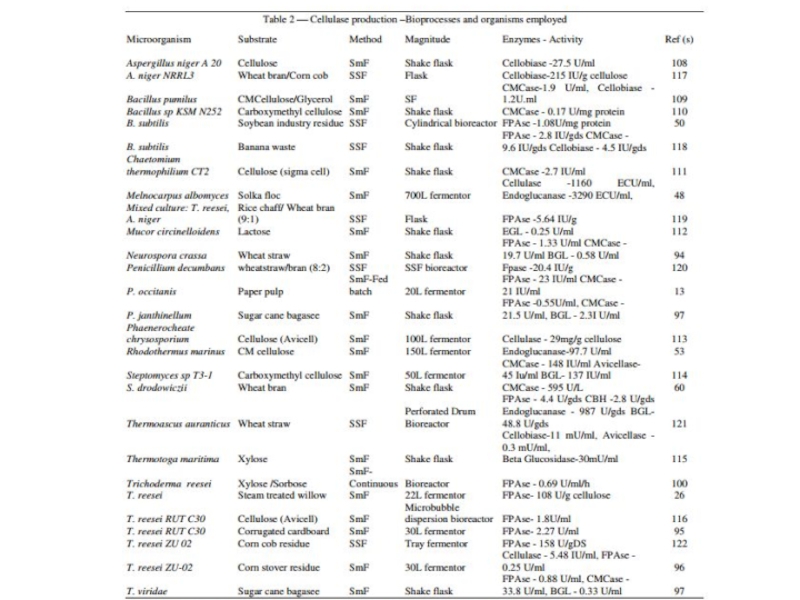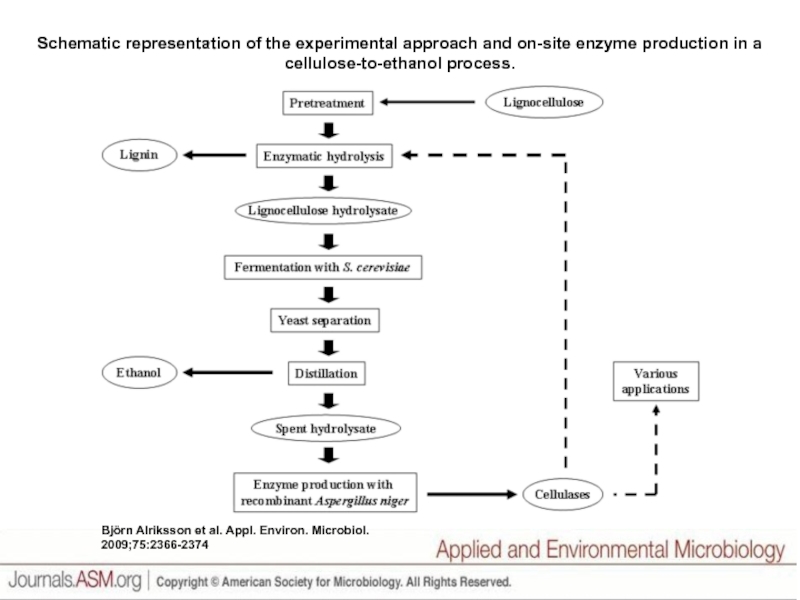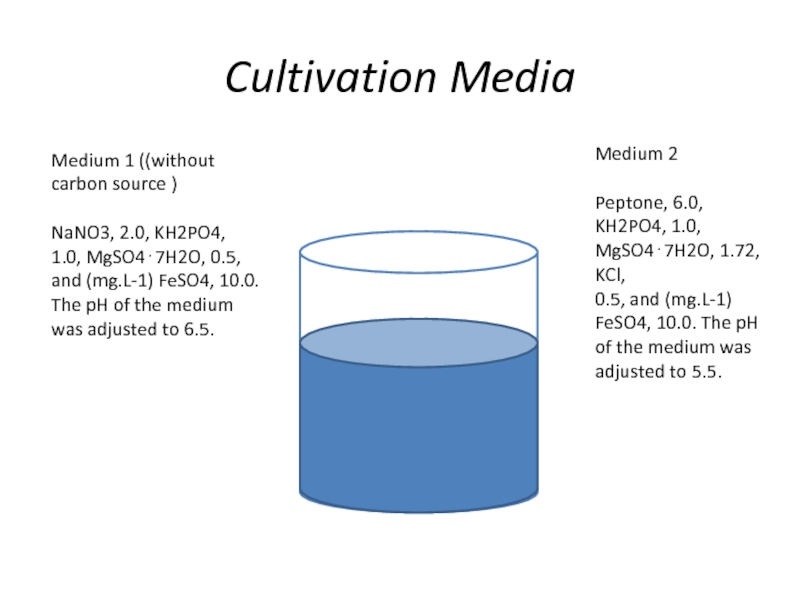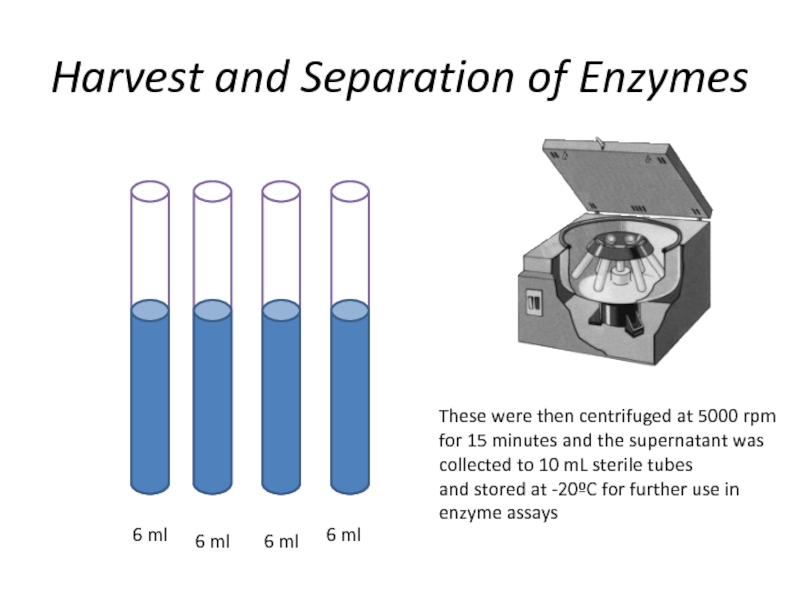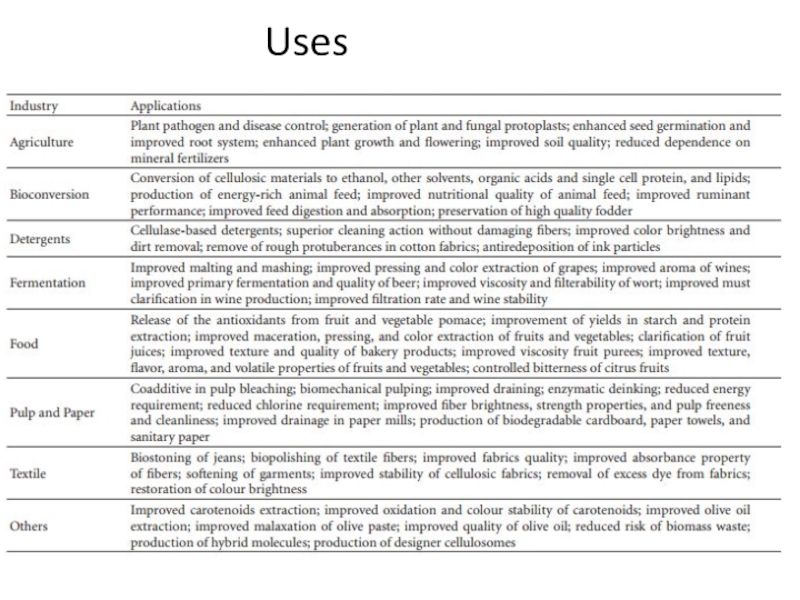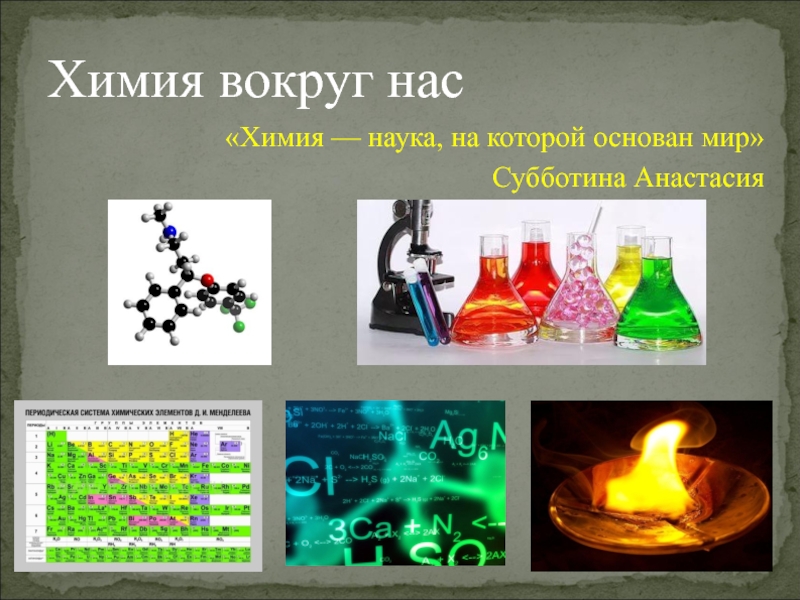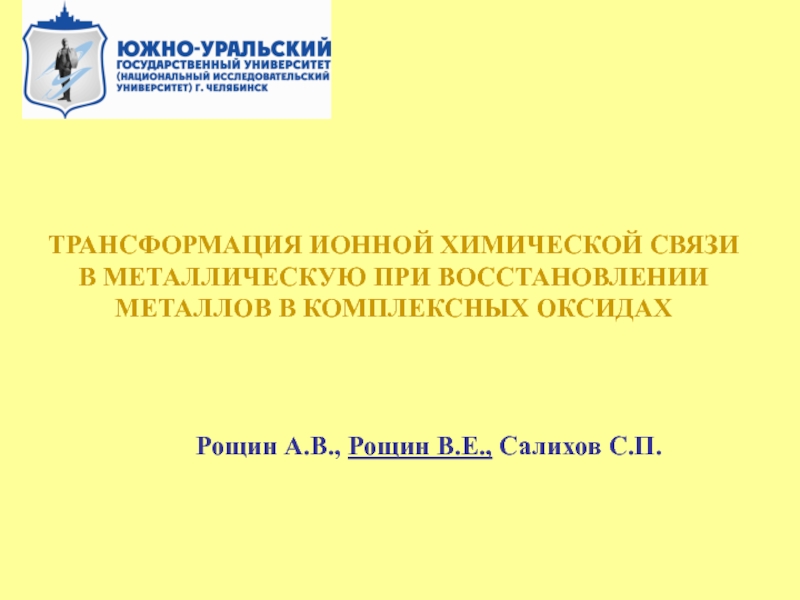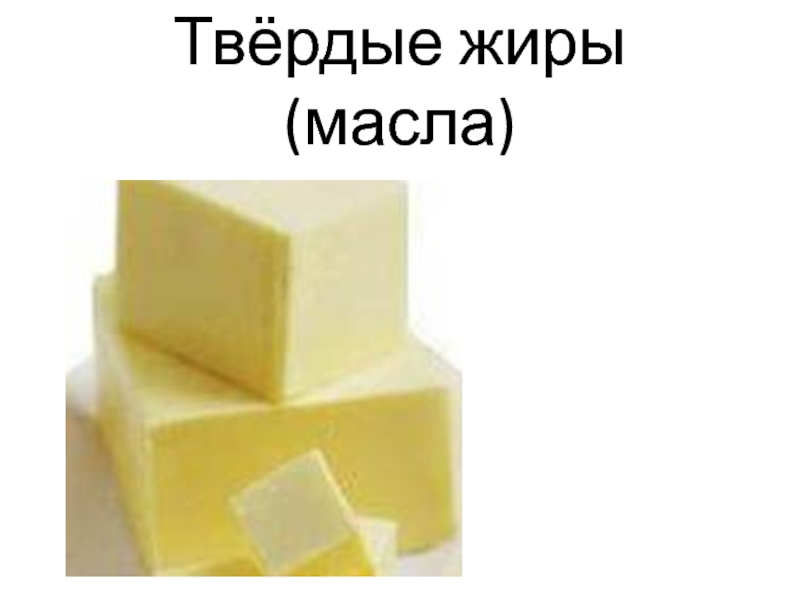- Главная
- Разное
- Дизайн
- Бизнес и предпринимательство
- Аналитика
- Образование
- Развлечения
- Красота и здоровье
- Финансы
- Государство
- Путешествия
- Спорт
- Недвижимость
- Армия
- Графика
- Культурология
- Еда и кулинария
- Лингвистика
- Английский язык
- Астрономия
- Алгебра
- Биология
- География
- Детские презентации
- Информатика
- История
- Литература
- Маркетинг
- Математика
- Медицина
- Менеджмент
- Музыка
- МХК
- Немецкий язык
- ОБЖ
- Обществознание
- Окружающий мир
- Педагогика
- Русский язык
- Технология
- Физика
- Философия
- Химия
- Шаблоны, картинки для презентаций
- Экология
- Экономика
- Юриспруденция
Cellulase. Introduction (source) презентация
Содержание
- 1. Cellulase. Introduction (source)
- 2. Introduction (source) Cellulase refers
- 3. Cellulase Cellobiohydrolases whose major
- 4. Some species of fungi and
- 5. Other Names Other names for 'endoglucanases'
- 6. Types of reactions/ Classification
- 7. Choice of host organism
- 8. Strain engineering Thermostable cellulases production Nowadays, most
- 9. Homologous overexpression in bacteria Some studies
- 10. Heterologous overexpression The strategies based in
- 11. Future targets for genetic manipulation and
- 13. Schematic representation of the experimental approach and
- 14. Cultivation Media Medium 1
- 15. Harvest and Separation of Enzymes
- 16. Uses
- 17. Thank you for attention!!!
Слайд 2Introduction
(source)
Cellulase refers to an entourage of enzymes produced chiefly
However, there are also cellulases produced by a few other types of organisms, such as some termites and the microbial intestinal symbionts of other termites.
Several different kinds of cellulases are known, which differ structurally and mechanistically.
Слайд 3Cellulase
Cellobiohydrolases
whose major activity involves the cleavage of cellobiose residues consecutively from
Endoglucanases
whose major activity involves the cleavage
of β-glycosidic bonds in the cellulose chain
they are necessary for the efficient hydrolysis of cellulose to soluble oligosaccharides
Слайд 4
Some species of fungi and bacteria are able to exhaustively digest
The majority of organisms that produce cellulases can only hydrolyze the cellulose in their diets to certain extent. they are known as incomplete cellulases.
These cellulases unable to digest cellulose exhaustively can still generate sufficient amount of glucose for their producers. Endogenous cellulases of termites belong to this category.
Complete vs. incomplete cellulases
Слайд 5Other Names
Other names for 'endoglucanases' are: endo-1,4-beta-glucanase, carboxymethyl cellulase (CMCase),
Слайд 6Types of reactions/ Classification
General types of cellulases based on
Cleaves internal bonds at Endocellulase (EC 3.2.1.4) randomly amorphous sites that create new chain ends.
Cellobiase (EC 3.2.1.21) or beta-glucosidase hydrolyses the exocellulase product into individual monosaccharides.
Cellulose phosphorylases depolymerize cellulose using phosphates instead of water.
Слайд 8Strain engineering
Thermostable cellulases production
Nowadays, most of the studies about production of
Слайд 9Homologous overexpression in bacteria
Some studies report the use of directed
However, the use of these bacteria has disadvantages such as low protein yields, high production costs or need of enriched media
Слайд 10Heterologous overexpression
The strategies based in heterologous expression are focused in
Bacteria such as E. coli, different species from the genus Bacillus, Pseudomonas fluorescens, Ralstonia eutropha and Zymomonas mobilis;
yeasts such as Saccharomyces cerevisiae and Pichia pastoris and filamentous fungi from genera Aspergillus and Trichoderma genera
are the most used in research and industry, considered as host systems for producing recombinant enzymes. Furthermore, cell cultures of mammals, plants or insects and transgenic plants and/or animals are used for protein expression
Слайд 11
Future targets for genetic manipulation and optimization will include the use
Слайд 13Schematic representation of the experimental approach and on-site enzyme production in
Björn Alriksson et al. Appl. Environ. Microbiol. 2009;75:2366-2374
Слайд 14Cultivation Media
Medium 1 ((without carbon source )
NaNO3, 2.0, KH2PO4,
1.0, MgSO4⋅7H2O,
Medium 2
Peptone, 6.0, KH2PO4, 1.0, MgSO4⋅7H2O, 1.72, KCl,
0.5, and (mg.L-1) FeSO4, 10.0. The pH of the medium was adjusted to 5.5.

